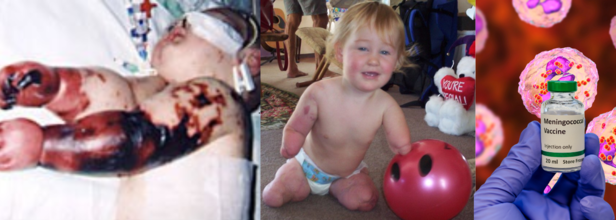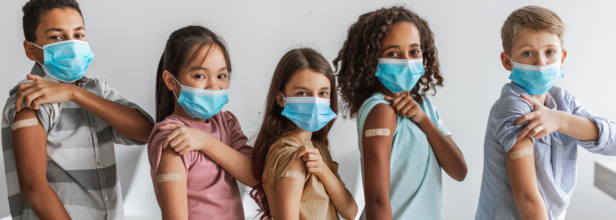- Health Conditions A-Z
- Health & Wellness
- Nutrition
- Fitness
- Health News
- Ayurveda
- Videos
- Medicine A-Z
- Parenting
- Web Stories
Scientists Just Fixed A 'Faulty' Gene Behind Deafness And Hearing Loss In Children

Credits: Credits
For generations, congenital deafness has been a lifetime of silence or partial hearing regained by way of invasive procedures such as cochlear implants. As revolutionary as those devices have been, however, they have their limitations—especially for people who are born with genetic types of hearing loss that destroy the natural processes of sound conduction but a new scientific advance is now making something once considered impossible a possibility- actually restoring natural hearing through gene therapy.
First-of-a-kind, researchers have been able to restore hearing in youngsters, teens, and even young adults who were born with a certain form of congenital deafness. The therapy, which aims at an errant gene called OTOF, is a landmark in the management of genetic hearing disorders.
What Is OTOF-Related Deafness?
The culprit gene, OTOF, encodes a protein known as otoferlin, which is vital for the conduction of sound signals from the inner ear to the brain. When the gene is mutated, the otoferlin protein is either absent or defective, and the person experiences severe hearing loss since birth. The inner ear itself is normal—only the signaling system is defective.
That's precisely why OTOF-associated deafness is such a strong candidate for gene therapy. If you can restore or replace the defective gene, the body already has the physical equipment in place to naturally process sound.
The research team, based in five hospitals and spearheaded by genetic hearing loss experts, employed a virus that has been altered as a delivery vehicle. This virus was altered to transport a healthy version of the OTOF gene and inject it directly into the hair cells of the inner ear—the sound-detecting sensory cells.
This is how it works: the genetically altered virus binds to a hair cell surface, enters the cell, and delivers the repaired gene into the nucleus. The cell then starts manufacturing working otoferlin protein, effectively rewiring the ear-to-brain communication line. It's not science fiction—this is precision molecular medicine in action.
The most impressive feature of this research is its wide range of participant ages, ten people between 1 and 24. All ten of them had OTOF-related congenital deafness. It was the first research study to consider whether gene therapy might cure hearing in children and young adults—not only in babies or toddlers.
The treatment consisted of a single injection of the virus carrying the gene into the inner ear of the patient. Patients were tested for 12 months with both objective hearing measures (such as auditory brainstem responses) and behavioral tests (like button-pushing in response to hearing specific tones). Results were immediate and dramatic. During the initial month, patients showed:
- A 62% increase in brainstem hearing response tests
- A 78% increase in behavioral hearing tests
- In a few instances, near-normal speech perception
A seven-year-old patient reportedly started reacting to sounds only three days post-treatment—a moment that surprised the medical staff and the family alike.
Even more promising, the side effects were minimal and easy to manage, the most frequent being a brief fall in white blood cell level. No severe adverse events were noted, affirming the safety of this gene therapy strategy.
How Does Gene Therapy Works?
Interestingly, the research found that 5- to 8-year-old children gained the most—more than toddlers. This contradicts earlier beliefs that earlier is always better in cases of congenital conditions. It implies that the brain's preparedness to receive new auditory information could be as crucial as the ear's structural integrity.
Why exactly this age window is optimal is still unclear, but it's an important question for future scientists to answer as they continue to fine-tune the timing of treatments.
This is not merely another clinical milestone, it's a shift in paradigm. By addressing the root genetic cause of deafness, this therapy holds the potential for a one-time fix that restores hearing naturally without the implant or the lifetime devices.
And although this trial involved the relatively uncommon OTOF mutation, the implications are far-reaching. Researchers are currently investigating gene therapies for other, more prevalent forms of inherited deafness with complicated patterns of genetics. Promising early results have been seen in animal studies, and human trials may follow in the next few years.
Additional information will be required to ascertain for how long the restored hearing lasts. Will the effects last the rest of one's life, or will there be the need for booster shots? Long-term follow-up studies are already in process.
Meanwhile, this achievement is a beacon of hope for families who suffer from genetic deafness—and a strong reminder that the future of medicine is not about compensating for our genes but rather about correcting them.
For the first time, gene therapy has shown that it can restore hearing in individuals born with silence—not only control their condition, but change it. The more this research grows and technology develops, the world is moving closer to a time when congenital deafness could one day not only be treated, but cured and for families with genetic hearing loss, that's not only science—it's life-altering.
Kang Seo-ha, South Korean Actress Dies At 31 After Battling Stage IV Stomach cancer

Credits: Instagram and Canva
South Korean actress Kang Seo-ha, known for her performances in K-dramas like First Love Again and The Flower in Prison passed away at the age of 31 after a long battle with stomach cancer. Her family also confirmed the news on Monday.
Kang's family took to Instagram, and posted a video along with a long note in remembrance of her.
“I still can’t believe it, unnie. Even while enduring such immense pain, you worried about those around you and about me. Even though you couldn’t eat for months, you insisted on paying for my meals with your own card and never let me skip a meal. My angel, who left us far too soon. Even as you endured everything with painkillers, you said you were grateful that it wasn’t worse, and I felt truly ashamed. My dear sister, you went through so much. I hope you are only happy and free from pain where you are now,” the note read.
A memorial service is also being organized at Seoul St Mary's Hospital and the funeral procession is scheduled at 7.40am on July 16 (KST).
Kang Seo Ha's Cancer
It was in 2024 that Kang was diagnosed with advanced stomach cancer. As per reports, she had stage IV stomach cancer and underwent treatment, including multiple rounds of chemotherapy, while she continued to fulfill her professional commitments. However, in mid-2025, her health rapidly declined, leading to her death.
As per the National Cancer Institute, US, cancer stage describes the extent of cancer in the body, which includes the size of the tumor, whether it has spread, and how far has it spread from where it was first formed.
In stage IV stomach cancer, which Kang too was suffering from, the cancer spreads to other body parts, mostly lungs, liver, distant lymph nodes, and the tissue that lines the abdomen wall.
Stage IV stomach cancer, also known as metastatic stomach cancer, occurs when cancer cells spread from the stomach to other parts of the body through the lymphatic system or bloodstream. The new tumors are still made up of stomach cancer cells, not cells from the organs they’ve reached. So, if the cancer spreads to the lungs, it's still considered stomach cancer — not lung cancer — and is referred to as metastatic stomach cancer.
Stomach Cancer And Its Types
The National Cancer Institute, US, notes that stomach cancer starts in the cells lining the stomach. There are various types of stomach cancers including:
Adenocarcinoma of the stomach, which begins in the mucus-producing cells in the innermost lining of the stomach. Nearly all stomach cancers are adenocarcinomas.
Gastroesophageal junction adenocarcinoma (GEJ) is a cancer that forms in the area where the esophagus meets the gastric cardia. GEJ may be treated similarly to stomach cancer or esophageal cancer.
Gastrointestinal neuroendocrine tumors are cancers that begin in neuroendocrine cells (a type of cell that is like a nerve cell and a hormone-making cell) that line the gastrointestinal tract.
Gastrointestinal stromal tumors (GIST) begin in nerve cells that are found in the wall of the stomach and other digestive organs. GIST is a type of soft tissue sarcoma.
Primary gastric lymphoma is a type of non-Hodgkin lymphoma that forms in the stomach. Most primary gastric lymphomas are either mucosa-associated lymphoid tissue (MALT) gastric lymphoma or diffuse large B-cell lymphoma of the stomach.
Australia Sees Rise In Meningococcal Disease: What You Need To Know About Symptoms And Vaccination

In photos: Charlotte Cleverley-Bisman, who had all four limbs partially amputated aged seven months due to meningococcal disease (Wikimedia Commons); and Canva
With the world coping with various bacterial infections, in Australia, it is the season of meningococcal disease. Last month, two Tasmanian women were hospitalized with invasive meningococcal disease, which has brought the numbers to 48.
The cases are showing an uptick, and health authorities are now urging people to watch for symptoms and to check whether they are eligible for vaccination.
What Is Meningococcal Disease?
According to the Australian Government Department of Health, Disability and Ageing, meningococcal disease is a contagious disease caused by the bacteria Neisseria meningitidis, which is also known as the meningococcal bacteria. It can develop quickly and could be fatal if not treated. Anyone with a suspected meningococcal infection needs to see their doctor immediately.
The official government website of Australia notes: "Meningococcal disease is a medical emergency. It can kill within hours, so early diagnosis and treatment are vital. Do not wait for the purple rash to appear, as that is a late stage of the disease"
However, the ray of hope is that this disease is vaccine-preventable.
What Are The Common Symptoms?
The Australian Government's Healthdirect notes that the common symptoms of this disease include:
- Fever
- Purple rash
- Meningitis
- Sepsis
- Headache
- Neck stiffness
- Light sensitivity
- Nausea and vomiting
- Loss of appetite
- Drowsiness and confusion
- Leg pain or other muscle or joint aches and pains
In babies or young children, the following can be the symptoms:
- difficulty feeding or reduced feeds
- irritability
- tiredness and floppiness
- seizures
- having a high-pitched cry
- having a bulging fontanelle (the soft spot on the top of their head)
- pale or mottled skin
The disease can live in the nose and throat of many healthy people and could spread through coughing, sneezing, sharing eating or drinking utensils, and by kissing.
Complication with the disease can also lead to:
- limb differences, or losing a limb
- skin scarring
- hearing loss
- blindness
- learning difficulties
- brain damage
Vaccination
There are different vaccines that treat the different types of this disease, including A, B, C, W, and Y. The vaccination meningococcal B and meningococcal ACWY can be taken at 6 weeks of age.
The MenACWY vaccine is a conjugate vaccine, which means it combines sugars from the outer coating of the bacteria with a protein. This helps trigger a stronger immune response, particularly in young infants.
In contrast, the MenB vaccine doesn’t use the sugar capsule. Instead, it contains four different proteins taken from the surface of the meningococcal B bacteria.
One should speak to a doctor if they have not been vaccinated at a younger age. The vaccination is recommended for:
- babies, children, teenagers and young adults
- Aboriginal and/or Torres Strait Islander people
- young adults who live in close quarters or who are current smokers
- travellers
- people who have certain medical conditions that increase their risk of meningococcal disease
- laboratory workers who work with the bacterium that causes meningococcal disease
However, as Healthdirect, an Australian Government's website notes that even with the administration of vaccine, meningococcal disease laboratory workers who work with the bacterium that causes meningococcal disease symptoms may still may linger. In such a case, go visit the hospital for further checks.
Over 14 Million Children Miss Out On Vaccines Amid Aid Cuts And Rising Misinformation

Credits: Canva
More than 14 million children worldwide did not receive a single routine vaccine last year, according to a joint report released Tuesday by the World Health Organization (WHO) and UNICEF. The number remains unchanged from 2023, highlighting a worrying stagnation in global immunization efforts.
The annual estimate of global vaccine coverage found that 89% of children under one year received the first dose of the diphtheria, tetanus, and pertussis (DTP) vaccine in 2024 — the same as in the previous year. However, only 85% completed the full three-dose series, a slight rise from 84% in 2023.
Despite modest gains, officials warn that progress is faltering due to geopolitical shifts, humanitarian crises, and rising vaccine misinformation.
Foreign Aid Cuts Threaten Vaccine Programs
The report comes amid a sharp pullback in international health funding, particularly from the United States. Earlier this year, President Trump officially withdrew U.S. membership from the WHO, suspended most humanitarian aid, and moved to shut down the U.S. Agency for International Development (USAID).
Further compounding the issue, U.S. Health
Secretary Robert F. Kennedy Jr., a known vaccine skeptic, recently announced the withdrawal of billions of dollars pledged to Gavi, the global vaccine alliance. He accused the group of “ignoring the science,” despite overwhelming evidence that vaccines are safe and effective.
These decisions are expected to significantly impact global vaccine rollouts, especially in low-income countries.
Who's Being Left Behind?
Nine countries accounted for 52% of all unvaccinated children in 2024. These include:
- Nigeria
- India
- Sudan
- Democratic Republic of Congo
- Ethiopia
- Indonesia
- Yemen
- Afghanistan
- Angola
Among them, Sudan reported the lowest coverage for DTP vaccines — a reflection of the country’s ongoing conflict and humanitarian crisis. WHO officials said war, displacement, and weak health systems are major barriers to vaccination.
“Access to vaccines remains deeply unequal,” said WHO Director-General Tedros Adhanom Ghebreyesus. “Drastic cuts in aid, coupled with misinformation about vaccine safety, threaten to unwind decades of progress.”
Measles on the Rise Amid Lagging Coverage
The report showed a slight improvement in global measles vaccination rates, with 76% of children receiving both doses — up from previous years. But experts warn this is far below the 95% threshold needed to prevent outbreaks of this highly contagious disease.
In 2024 alone, 60 countries reported large measles outbreaks. The United States is currently experiencing its worst measles outbreak in over 30 years, while Europe recorded 125,000 cases, more than double the 2023 count.
Last week, a child in Liverpool, UK, died of measles. Despite ongoing public awareness campaigns, only 84% of children in the U.K. are vaccinated against the disease.
“It’s Never Too Late to Be Vaccinated”
Experts are urging families and governments to act. “It is hugely concerning, but not at all surprising, that we are continuing to see outbreaks of measles,” said Helen Bradford, a children’s health professor at University College London. “The only way to stop measles spreading is with vaccination. It is never too late to be vaccinated — even as an adult.”
© 2024 Bennett, Coleman & Company Limited

